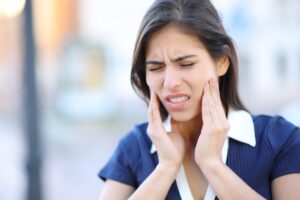10 Surprising Sleep Apnea Facts
Most people have heard of sleep apnea—but you may not know or understand how common it is, how often it goes undiagnosed, and contributing factors of sleep apnea. Perhaps the most surprising facts are how dangerous it is—and yet how easy it can be to treat, especially in mild to moderate cases. Read on to learn some surprising sleep apnea facts!
1. It is estimated that 2-9 percent of adults have obstructive sleep apnea.
This number may even be low—some studies place it as high as 20 percent. The true number is known because…
2. It’s estimated that as many as 90 percent of sleep apnea cases are undiagnosed.
Many people believe snoring is just a nuisance for the bed partner, without realizing that it may be caused by obstructive sleep apnea—a potentially life-threatening condition that can be treated.
3. People with sleep apnea may stop breathing hundreds of times a night.
When you have sleep apnea, your airway is blocked and your body wakes you from sleep to get your breath going again. This is one of the sleep apnea facts that is most surprising—and a little scary for undiagnosed people who snore. This repeated fragmented sleep is a great danger to your long-term health.
4. Weight can be a contributing factor to sleep apnea.
In fact, the popular NBC show, The Biggest Loser diagnoses and treats sleep apnea in contestants, and in one season, every cast member was diagnosed. With increased body weight, excess fat can both decrease lung capacity and build up in the neck and block a person’s airway during sleep. According to one study, sleep apnea is 7 times more common in people who are obese. However…
5. Not everyone with sleep apnea is obese.
A Johns Hopkins article notes that while 20% of obese people have sleep apnea, it also affects an average of 3% of individuals of normal weight.
6. Genetics may contribute to sleep apnea.
According to the National Sleep Foundation, while little is known about specific genes that cause sleep apnea, genetic factors do seem to play a role in contributing to the risk of developing obstructive sleep apnea. Certain factors like body fat, face anatomy, breathing control, and innate sleep schedule may make a person predisposed to obstructive sleep apnea.
7. Sleep apnea rates are higher in men than women, but prevalent in both.
Sleep apnea affects 24% of men and 9% of women, according to Healthgrades. And the numbers increase with age—according to the American Heart Association, approximately 34% middle-aged men and 17% of middle-aged women meet the diagnostic criteria for OSA.
8. Mortality risks are higher in people with untreated sleep apnea.
Sleep apnea made headlines when actress Carrie Fisher died and Los Angelas coroner listed sleep apnea as a contributing factor. According to a sleep study followup, people with untreated apnea were three times more likely to face a premature death.
9. Sleep apnea varies in severity.
You can have mild, moderate, or severe sleep apnea. With mild sleep apnea, you stop breathing 5-15 times per hour. With moderate sleep apnea, you stop breathing 16-30 times an hour. With severe sleep apnea, you stop breathing more than 30 times an hour.
10. Your dentist can help treat your apnea with an oral appliance.
For sleep disorders diagnosed as mild to moderate, an oral appliance like a retainer or mouth guard can be used to keep your airway open and return you to uninterrupted nights of healthy sleep. For severe sleep apnea, a CPAP machine is the first treatment option—but if you can’t tolerate the CPAP, an oral appliance may be used.
Maybe these sleep apnea facts have you wondering if you or your partner have sleep apnea. If you suspect you are one of the 90 percent of undiagnosed people with sleep apnea, schedule a sleep consultation today and get on your way to good, healthy sleep!






